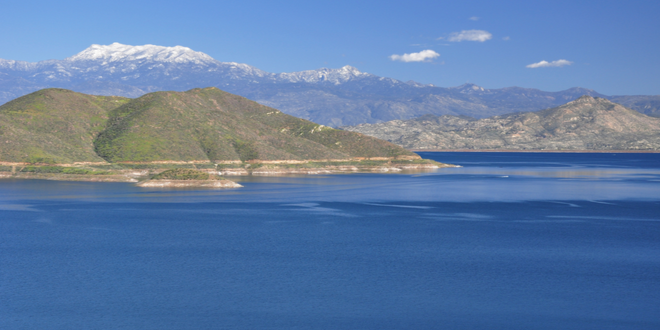Metropolitan Water District’s Board of Directors voted last week to move forward with two projects aimed at increasing water supplies for millions of Southern Californians.
The projects separately work to push water from the Colorado River and Diamond Valley Lake, Southern California’s largest reservoir, into communities that currently have limited access to these diverse and stored supplies.
“The severity of our recent drought revealed vulnerabilities and inequities in our water supply and delivery system,” Metropolitan board Chairman Adán Ortega, Jr. said. “While many of our communities had access to diverse supplies and stored water during the record dry conditions, about one-third of Southern California did not. Our board took important steps today toward addressing these inequities. We are investing in new, valuable infrastructure that will help us avoid future shortages for everyone.”
Metropolitan’s board approved a $9.8 million contract with J.F. Shea Construction Inc. for the first phase of a project that will help bring additional water from the Colorado River and Diamond Valley Lake to parts of Los Angeles County and southern Ventura County. The initial phase of the project features the design of two new pump stations along a major Metropolitan pipeline that will allow water from these sources to be delivered to three of the six Metropolitan member agencies that faced mandatory conservation measures last year: Calleguas Municipal Water District, Las Virgenes Municipal Water District, and the Los Angeles Department of Water and Power. Construction of the Sepulveda Feeder Pump Stations Project is expected to begin in late-2024.
In a separate action, Metropolitan’s board also approved a $15.7 million construction contract with Steve P. Rados, Inc. to construct an intertie between two major Metropolitan pipelines. The project is the second in a suite of four that together will re-engineer Metropolitan’s system and allow water to be delivered from Diamond Valley Lake to the San Gabriel Valley and Inland Empire. The suite of projects collectively push stored water uphill to the Rialto Pipeline, which delivers water to the Inland Empire Utilities Agency, Three Valleys Municipal Water District and Upper San Gabriel Valley Municipal Water District – the other three Metropolitan member agencies that faced mandatory conservation.
“Our water delivery system was originally designed using gravity, and while that worked for a long time, the weather extremes we are seeing because of climate change means we need to rethink how we operate and incorporate innovative practices,” Metropolitan General Manager Adel Hagekhalil said. “Both of these projects take advantage of our existing pipelines, but reverse the normal flow through the use of pumps.”
The Sepulveda Feeder project is the first time Metropolitan is using the progressive design-build method for a project since the state legislature last year granted the agency the ability to use such alternative methods to expedite completion of construction projects.
“We’re excited to put this new authority to use,” Hagekhalil said. “The ability to use a single firm for the design and construction of this project will allow us to save critical time. It would take about two years longer if we had to use the traditional design, bid, build method. With the next severe drought around the corner, that is time we don’t have.”
 California Water News Daily Your Source For Water News in California
California Water News Daily Your Source For Water News in California


